 |
Drawing
from Nature explores representations
of nature and culture with the juxtaposition of a pencil & camera - © Lloyd Godman
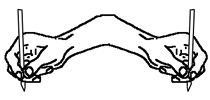
Drawing
from NaturE
Lloyd Godman 1992
|
Text
Among
the ever-increasing array of mass manufactured photographic equipment,
few cameras if any produce images other than rectangular or square
in shape. From the smallest format cameras through the popular 35
mm to 120 medium format, 4x5 and even 8x10, from the assemblage of
the simplest to the electronic wizardry of the most complex, all are
based on an images shape with four sides.
We accept it without protest, as the archetypal form our images come
in.
Film
and paper are produced in
more efficient rectangles, dominance of the shape paper
neatly stored in rows, of rectangular paper ready This practice is not just whose roots in this area western tree
of ART: too-dimensional works
are is
the one unifying factor have in common before with a first mark or pressing to match this equipment further establishing the rectangle. Boxes of photographic contain individual sheets for use, 100 at a time. peculiar to photography, come from the great paper, canvas,
almost all centred
on this shape. It many western artists striking the blank material the camera
shutter. |
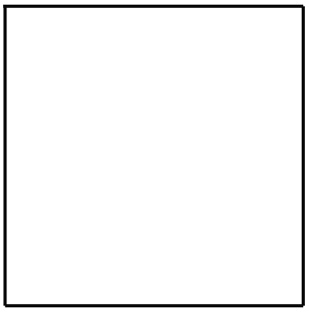
|
Our perception
of an ArtWork is almost almost certainly contained within the frame
of a rectangle and the exact space available within the 'frame'. The four
edges of the film are all-important in their work. The challenge
for them is the design of the image within the frame, and in many instances
this became justification for a lack of image content and meaning in the
work. The photograph
then, is rectangular only by our convention, although we sometimes fail
to be aware of the convention as such and take it as "reality" or
the given. The fact of image composition within the bounds of the frame
is enough and all the meaning needed.
|
If the analogy
with painting and the conventions of camera construction had not dictated
the rectangular shape of the photograph, the sheer efficiency of the geometry
might have done so anyway.
|
The Rectangle is without doubt
the primary building block of our structures, however small or
large. Whole cities are built on the concept of four sides, from
the broad aerial view of street patterns laid out below to the
macro view of a small book within one of the buildings, or further
inward to the circuit of a computer. It is a modular shape which
when laid end on end , side by side or one on top of the other
continues to clone itself as a reinforcement of the paradigm.
|
Property
developers, and their associated promiscuous assemblage of money-lenders,
accountants, etc. welcomed the modernist movement with open arms and fatter
bank accounts as an opportunity to finally remove those ornate but expensive
intricacies of form and embellishment from the construction of new buildings.
When space and finance are at a premium why produce an intricate
facade when the very structure itself could act as one, urbane and smooth?
To cut all this unnecessary decoration and expense; and all under the
guise of ART!
Is
it little wonder then that the modern movement , besides being supported
by western political ideologies, was embraced whole-heartedly
by the property developers and industrialists of the time as a discreet
way of advocating the removal of expensive decoration from architecture
under the pretension of the avant-garde. Because of our perception of
time. always moving forward we may be willing to accept without question
or thought that any change in society and its manifestations advance
forward also. Perhaps now, left behind is the legacy of this experiment,
gigantic structures piercing the spiritual line of sky and earth and
mirror glass reflecting nothing more than itself. A reflection of us,
our culture and unquestioned change. The achievements of our age that
are in flux with the continuation of change to this metaphysical line.

Naturally
textured blocks of stone hewn from raw irregular deposits
within the earth, fall neatly into place as rectangular curb stones
of a large but 'ordered city. Our weight is upon them, without
recognition of the stones' origin as we cross from one side of
the street to the next. Large impressive slabs of polished marble
veneer on a building street frontage are rarely thought of by
the constantly moving shapes reflected on its surface. Modern
building foundations driven deep into the earth as rods of cemented
steel, then extended from these structural supports in a familiar
unimaginative shape, the rectus bulk reaches high, skyward despite
the plasticity of concrete and the infinite possibilities
of form, visual surprise and sensory stimuli it offers. So much
of our design, with the
exception of a few rounded corners, conforms to this rectangular
standard. Photographic negatives; small rectangular images
of silver or dye embedded gelatin, produce photographs of similar
shape and are often stored in rectangular album. Or, perhaps,
neatly framed in rectangular frames, mounted on cleanly cut rectangular mat board, the rectangular photograph rests as an icon to its
own shape. It sits on a clean white rectangular wall within a
rectangular structure and administered by a person, possibly of
rectangular thought, at rectangular desk, with a rectangular catalogue
of the same exhibition. It is all very neat and delicately wonderful!
We can see it at any gallery of any city; it is what we
are conditioned to expect. In harmony with this machined rectangularity
is the sympathetic sophistication of the glossy photographic surface
which reflects the technological

achievements of its time. It exudes a sense of regularity and
a smooth clean synthetic surface. Instrumental in the birth of
photography was the need to quickly and more realistically produce
n image of the real world. Painting and graphic arts had attempted
this task but most often only exposed their shortcomings. Somehow there
was always the interpretation of the artist, the characteristic marks
of the medium involved or some other idiosyncrasy that removed
the reality of the subject (of course it was later debated by
some, suffered from all of these as well).
Photography
on the other hand produced the most remarkable likeness imaginable,
accurate in detail, texture nd perspective. It squarely threatened
the pseudo realistic merrymakers of the time in a way no one could have
predicted with its unmatched strength later turned against it and criticized
as its achilles heel by the critics nd cynics.
1)
Charles Blanc made the point 'Photography copies everything and explains
nothing, it is blind to the realm of the spirit'.
However,
photography ws fathered by the endeavors of traditional mark-makers
and a need to draw. When the simplistic but exquisite marks in
the caves at Lasux were made, could the makers ever have perceived
the conceptual idea of a camera and associated chemical process
needed to produce the photograph? Their mark-making at
the time was innovative enough.
|
Evolution
of thought and perception crates a material need within the human
species. The cerebral perception of flight stimulates the desire,
which leads to the experimentation, invention and finally the
reality. The physical evolution needed for human flight is immense
while the intellectual evolution to allow us flight is minor by
comparison. This is one feature that holds us apart from other
life forms on the planet.
|
We
can't fly but our invention can!
Do not science and art need this
process of invention for their very
survival and growth? the excitement
of the creative-inventive act can
defy explanation while motivating
extraordinary amounts of human
energy in the quest for the
illusionary answer (just ask my
wife Elaine and and my friends).
It can be one of the most
frustrating, enigmatic but
revealing and fulfilling human
encounters. |
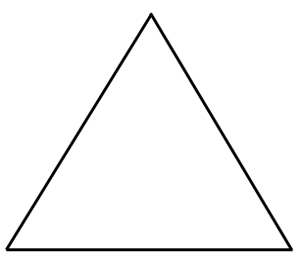
|
At
the time of invention, the
photograph pointed to the future.
At last the sacred code of image-
making had been broken and
photography transformed the
perception of art forever. Great
debates raged about its validity
as art, even to the point of court
cases. The act of machines
creating images was also
questioned, some seeing it
as an ultimate act of
blasphemy and a sure step to
Armageddon, even doubting the |
possibilities
of its existence. However, photography had broken the consecrated
code of image-making and in the eyes of some should be tortured
and tormented for this sacrilege forever. These bigots survive
even today, usually clinging onto the crumbling structure of easel
painting in a world of mass images transmitted through fiber optics
radio waves and digitization. They defy traditional values of
painting as king in a desperate bid to sustain a hierarchical
structure. Despite conservative, elitist and precious attitudes,
photography has become an effectual and rewarding way of making
creative images. It has become another tool in the expanding visual
vocabulary and is at present argued by some as at the cutting
edge of contemporary visual art being one of the primary mediums
of exploration. It has helped expand the boundaries of art without
doubt, even of painting itself.
It
invokes a sense of magic to see an image materialize on a blank
sheet. Perhaps it echoes an ancient ancestral memory of alchemy
and sacred codes broken in dark and mysterious places centuries
before in the quest of earlier secrets. Is not photography the
act of turning silver into a visual 'gold'?
|
|
|
Once
the precious
code had been
found, a flood of
refinements and hybrids
like 3D stereo, video, holograms
etc. were sure to follow. At last the hand seemed
free from the evolution of physical mark making and the
problem of communication between the mind command and the
physical act. Realistic images of unequaled quality could be
made at will
and in a split second with a mechanical device and a chemical
process. As democratic
as it sounded an educated photographer or discerning viewer
can always see the difference between good and bad photography
(in technical terms at least). A virtuoso in any medium emanates
a lasting presence to those in tune; though in flux due to the
contemporary elements since its creation, the purity of sound
continually resonates a quality beyond time. The idea that photography
is an easy art may have some truth, but only in the context
that it is also easy to
|
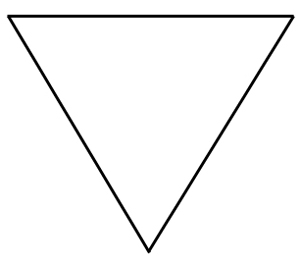
|
paint
a mark on a canvas and as in painting where not every mark on
any canvas is of some worth, so with photography not every photograph
is of value. In fact few are. Great photographs are hard won.
Conceivably, in terms of two-dimensional art there have only
been two major technical developments, the mark produced by
the hand and an image projected by a lens. Photography also
pointed to an age of machines,
industrialization and a synthetic environment alien to the old
world.
There could be no turning back. The world was changing
again, and as the photograph became a symbol
for all the innovation that nurtured
its existence. The camera
and the photograph
are the origin
of all
|
other descendants
including TV etc. that have
become
symbols of our time. Each
is a symbol of our tech-
nology, a symbol of our
command of materials, a symbol
of our ideas and a symbol
of so much, even without an image on
its surface. An icon to
our inventiveness, our cleverness. But the photo-
graphic family also stood
as a symbol for further reaffirmation of the rectan-
gle. And yet there was an
immediate contradiction to the rectangle. All lenses are
circular and project images
of a similar shape from which we then cut this neat clean
rectangle. The terms circle
of confusion and circle of illumination both relate
directly to photography. and yet from this circle we determine
to cut another shape. Centuries before
photography, artists used
the camera obscura to draw images from and were and were unaware
of this circular image projected through the lens. From the
simplest pinhole "lens" to the most expensive lumps of ground
glass, the projected image is circular. Human vision is also
a contra-
diction to the rectangle,
being more elliptical, while our perception is undeniably not
rectangular.
In photographic terms the
world is an infinite expanse in front of the lens, a circular
one through it and a rectangular one behind it. Despite its
efficiency, the rectangle is the most peculiar of shapes in
the context of the natural world.
The natural world is
an endless erratic mass. Although it is of apparently simple
comprehensible
order, it is unparalleled
in its perplexity of overlapping, interlocking and ever
changing array of
shapes that are
unconforming to geometric rectangles.
While there are gardeners grooming
organic rectangles,
the spontaneous flow of shape, form, texture, colour,
light and shade of
nature produce a super
intricate variegation unmatched by any or all of our structures.
The
human appreciation of
this complexity requires a subtle perception few people are
prepar-
ed to cultivate. A perception
astute and complex enough to take in much more than the
patterns of the
picturesque. An awareness which transcends the
obvious while
leaving no doubt
that any extended perception only increases that
chasm be-
tween the known and the
unknown.
I
Lie on a hill, this mound of earth
I feel the sky vaulted above me
Below I sense growth and flux
The stillness vibrates a relaxed
silence
I
am nowhere and everywhere at once
Recharging, absorbing, purifying
My heart is is synchronized with a larger pulse
The vortex of an earth stone in space
An unfolding universe, a grain of sand
The intoxication of infinite spin
How am I above this organic growth
yet below its understanding?
I NEED TO RETURN AGAIN.
The
notion that the source of the value 'beauty' may reside in an
undisturbed landscape, like the rectangle, is of our convention.
Without the ability of perception, the landscape just simply
exists while the implication by our standards may be that it
somehow contains beauty. The concept of beauty is of our invention
and is open to personal interpretation which may be constantly
in flux due to a multitude of experiences and reason. The general
interpretation of beauty in landscape during the 19th century
in New Zealand was greatly different from the general beliefs
of today; even though complex variations of that interpretations
exist today.
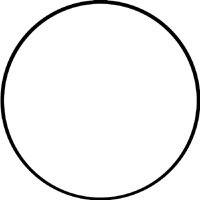
A Maori perspective may differ greatly from that of the Pakeha,
while the ideas of a primitive "civilization" with no
contact with the outside world we may not even be able to guess
at. And yet why do we continue to physically abuse the environment?
2) Our discouragement
in the presence of beauty results, surely, from the way we
have damages the country, from what appears to be our inability
now to stop, and from the fact that few of us can any longer
hope to own a piece of undisturbed land. Which is to say that
what bothers us about beauty is that it is no longer characteristic.
Unspoiled places sadden us because they are in an important
sense, no longer true.
Few places are isolated
and unchanged enough to remain in the spirit of wilderness,
and if we can find them there is always a fascination with
them that may lead to their change.
And is the movement away
from these these conventional landscape values as being unfashionable a reaction to its assumed association with other accepted
values of society? In doing so we may risk the very essence
of our survival on this planet while attempting to support
ideologies that are reactive to societies conditioning. It
is convenient to have an apathetic society who regard the
environment as not beautiful or such a cliché
as hardly worth mention, when the motive is to exploit the
environment in an unsympathetic and destructive manner. Unfortunately
do not most reactive anti-society movements in the end fall
victim to the fate they are trying to avoid, exploitation?
So often the message of an ARTWORK is lost by the monetary
value, the the very fate it might have been trying to avoid.
The
purchase of a work about the protection of the environment by
a large corporation becomes ironic when that very corporation
decides how much of the environment it will exploit in the board
room where the work hangs. I know they need to hear the message
louder and more often than most but is not the message for them
the inflated price tag, the brand name. It is an icon to investment
and their own wealth, not a protection of environment.
Should this not be the very reason to Love these untouched places before they are gone, but
not Loved to a point of extinction as we so often do?
I may feel the intense desire to escape the conformity of our
constructed civilization by placing my body and spirit in the
peace and isolation of a wilderness area. My photographic works
relating to this experience may clearly reveal something of
the undisturbed nature of this environment and act as a warning
of the delicate balance persuading a sense of caring, love and
emotional possession for the place in the viewer. Where an image
or a likeness of a place will not satisfy and only the place
will do, that passion may also create such a longing of the
viewer's personal presence in the place that it could ultimately
lead to the destruction of the object of both our fascination:
the undisturbed environment.
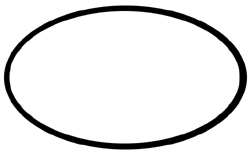 Do
I have the liberty to enter these precious areas in preference
to others? Is the nature and the experience of what I do as an
artist enough to permit entry in preference to another of more
modest background? For if they are never permitted entry their
mana and perception my never grow. But if I do enter, is it not
the attitude and sensitivity that may allow entry without undue
disturbance? Is there not some responsibility to find and experience
(perhaps in a photograph) the uniqueness for theses remaining
places and bring them to the attention of at least one other individual
before they are gone? A shadow, footprint and a photograph are
the softest evidence I can hope for in my journey through these
places. Breath softly on the land and feel its heart beat.
Do
I have the liberty to enter these precious areas in preference
to others? Is the nature and the experience of what I do as an
artist enough to permit entry in preference to another of more
modest background? For if they are never permitted entry their
mana and perception my never grow. But if I do enter, is it not
the attitude and sensitivity that may allow entry without undue
disturbance? Is there not some responsibility to find and experience
(perhaps in a photograph) the uniqueness for theses remaining
places and bring them to the attention of at least one other individual
before they are gone? A shadow, footprint and a photograph are
the softest evidence I can hope for in my journey through these
places. Breath softly on the land and feel its heart beat.
If
we did decide to abandon the present momentum of technological
invention (progress) and opt for complete return to nature,
does this mean return to the the darkness of caves and
food before fire? I feel few of us could tolerate the relinquishment
of creature comforts needed to allow even a small modificion
n our life styles besides the trauma of a total upheaval. But
if we ignore the organic nature of ourselves, our dependency
on the organic planet and the fineness of the balance, like
many other life forms, we may not be part of the ecosystem in
the further. We may be destroying the most valuable structure
of shelter and creature comforts we have in an effort to improve
our well-being, after all this planet provides us with shelter
from the storms of space and the rain of the universe while
providing enough comforts for our continued survival. We have
to ask the question, do we need the planet to survive or does
it need us? Do we continue forward but only with our priorities
drawn more seriously from organic nature?
The
instinctive idea of beauty in the landscape may be naive but
it may have some protetional value if enough people revere it.
Political change can occur if we act in unison however deep
or shallow our philosophical base is and whatever our beliefs
and values. A more sophisticated perception however may take
a lifetime commitment to evolve to a point of meaning or any
understanding by strength of human spirit nd focus unmoved
by the fleeting fashions and trends.
3)
"In the beginning those who knew the Tao did not try to enlighten
others, but kept them in the dark.
Why is it so hard to rule?
Because people are so clever
Rulers who try to use cleverness
Cheat the country.
Those who rule without cleverness
Are a blessing to the land.
These are the two alternatives.
Understanding these is Primal virtue.
Primal virtue is deep and fr. It leads
all things back
Towards the great oneness."

As
the saying goes' we are what we eat', is it also true "we my
become what we wish to become' if we wish it hard enough? Through
perseverance one may accumulate vast amounts of money, while
n openness to the land allows a oneness with the earth. Could
each perceive the other from their relative position?
In
a wilderness area each intricacy seems dependent upon the other,
suggesting natural visual ecosystem; the dislocation of
one piece reacts with the others that remain. To perceive this
system is to experience the unity-in-complexity of organic form.
A natural cohesion with a conditioned alternative o its own
logic and direction, a sensitive chaos. There are geometric
patterns in nature, but each struggles for its own durability
creating a visual irregular sophistication unobtainable with
the "indispensable" structure of rectangular form. To relate
with the human eye this visual harmonic may require much more
than just a sense of sight.
While
the building materials of modern city are concrete, glass and
steel, the structure of wilderness tracts are from the ancestral
elemental symbols earth, air, water nd fire. Their manifestation
being in the form of moist rich soils, remains of the generations
before; great swirling clouds, driven from the very breath of
the planet; free flowing rivers and streams musical in their
search for an end; and great rocks and ash, reminders of volcanoes
and lightning strikes, a fusion of this unity-in-complexity
of organic form presents a visual challenge created over the
mellennia into the areas we cll wilderness. A prolonged period
of several days or more in this environment presents the possibility
of becoming sensitized mentally to the visual irregularities
and unfamiliar rhythm of patterns of the surroundings. This
unaccustomed sensory stimuli may result in an overload
of the cerebral conditioning, demanding a rectangle or at the
very least simple straight line. However given more time
and an open sensitivity to the 'here and now' we can reach a
point where, confronted suddenly with a small rectangular sign
post or similar object, amongst the inter-weave of variegation,
we feel jarring of the organic rhythm and the sign
may emerge as alien as a cosmic-string.

This sensation, can and is most often
experienced by the 'average person' while driving through vast
areas of open county for hours or even days and at last coming
to few modest signs of civilization. Sometimes they my
feel the sensation, but are paralyzed to find meaning
or explanation, letting it expire without comment or cerebral
acknowledgment. If as an individual we cause an action on our
environment and can see no immediate harmful reaction, we are
only too willing to accept the reaction as insignificant or
imaginary when in fact it my be super slow slow motion
suicide. This ultimate action is imaginary and of doubt until
consciously acknowledged, by which time it may be too late to
react effectively.
4) Althusser describes he human subject
as being in n imaginary relationship to it existence.
The
nuclear debate is the classic example, 'if you can't see it,
it is probably harmless'. Perhaps it is this detached relationship
between the physical and the cerebral that yields to a logical
conclusion in the fallout of the nuclear issue? There are so
many examples where we actioned chemical change to the environment
and we allow this to accumulate without any real concern
for the future. The ultimate pessimist may argue that the supreme
conclusion of us as a species is extinction and through the
rapid exploitation of the environment the sooner we destroy
ourselves the better for the planet.
The purchase of a work about
the protection of the environment by a large corporation becomes ironic
when that very corporation decides how much of the environment it will
exploit in the board room where the work hangs. I know they need to hear
the message louder and more often than most but is not the message for
them the inflated price tag, the brand name. It is an icon to investment
and their own wealth, not a protection of environment.
Should this not be the very reason
to Love these untouched places before they are gone, but not Loved to
a point of extinction as we so often do? I may feel the intense desire
to escape the conformity of our constructed civilization by placing my
body and spirit in the peace and isolation of a wilderness area. My photographic
works relating to this experience may clearly reveal something of the undisturbed
nature of this environment and act as a warning of the delicate balance
persuading a sense of caring, love and emotional possession for the place
in the viewer. Where an image or a likeness of a place will not satisfy
and only the place will do, that passion may also create such a longing
of the viewer's personal presence in the place that it could ultimately
lead to the destruction of the object of both our fascination: the undisturbed
environment.
Do
I have
the liberty
to enter these
precious areas
in preference to
others? Is the nature
and the experience of
what I do as an artist enough
to permit entry in preference
to another of more modest background?
For if they are never permitted
entry their mana
and perception my never grow. But
if I do enter,
is it not the attitude and sensitivity
that may allow
entry without undue disturbance?
Is there not some
responsibility to find and experience
(perhaps in a
photograph) the uniqueness for
theses remaining
places and bring them to the attention
of at least
one other individual before they
are gone? A
shadow, footprint and a photograph
are
the softest evidence I can hope
for in my journey through these
places. Breath softly on
the land and
feel its
heart
beat.
|
| If we did
decide to abandon the present momentum of technological invention (progress)
and opt for complete return to nature, does this mean return
to the the darkness of caves and food before fire? I feel few of us could
tolerate the relinquishment of creature comforts needed to allow even a
small modification n our life styles besides the trauma of a total upheaval.
But if we ignore the organic nature of ourselves, our dependency on the
organic planet and the fineness of the balance, like many other life forms,
we may not be part of the ecosystem in the further. We may be destroying
the most valuable structure of shelter and creature comforts we have in
an effort to improve our well-being, after all this planet provides us
with shelter from the storms of space and the rain of the universe while
providing enough comforts for our continued survival. We have to ask the
question, do we need the planet to survive or does it need us? Do we continue
forward but only with our priorities drawn more seriously from organic
nature?
The instinctive idea of beauty in
the landscape may be naive but it may have some protetional value if enough
people revere it. Political change can occur if we act in unison however
deep or shallow our philosophical base is and whatever our beliefs and
values. A more sophisticated perception however may take a lifetime commitment
to evolve to a point of meaning or any understanding by strength
of human spirit nd focus unmoved by the fleeting fashions and trends.
3) "In the beginning those who knew
the Tao did not try to enlighten others,
but kept them in the dark.
Why is it so hard to rule?
Because people are so clever
Rulers who try to use cleverness
Cheat the country.
Those who rule without cleverness
Are a blessing to the land.
These are the two alternatives.
Understanding these is Primal virtue.
Primal virtue is deep and fr. It
leads all things back
Towards the great oneness."
As the saying goes' we are what
we eat', is it also true "we my become what we wish to become' if we wish
it hard enough? Through perseverance one may accumulate vast amounts of
money, while n openness to the land allows a oneness with the earth. Could
each perceive the other from their relative position?
In a wilderness area each intricacy
seems dependent upon
the other, suggesting natural
visual ecosystem; the dislocation of one piece
reacts with the others that remain.
To perceive this system is to experience the unity-in-complexity of organic
form. A natural cohesion with a
conditioned alternative o its own
logic and direction, a sensitive chaos.
There are geometric patterns in
nature, but each struggles for its own
durability creating a visual irregular
sophistication unobtainable with the
"indispensable" structure of rectangular
form. To relate with the
human eye this visual
harmonic may
require much more
than just a
sense of
sight.
|
| While the
building materials of modern city are concrete, glass and steel, the structure
of wilderness tracts are from the ancestral elemental symbols earth, air,
water nd fire. Their manifestation being in the form of moist rich soils,
remains of the generations before; great swirling clouds, driven from the
very breath of the planet; free flowing rivers and streams musical in their
search for an end; and great rocks and ash, reminders of volcanoes and
lightning strikes, a fusion of this unity-in-complexity of organic form
presents a visual challenge created over the mellennia into the areas we
cll wilderness. A prolonged period of several days or more in this environment
presents the possibility of becoming sensitized mentally to the visual
irregularities and unfamiliar rhythm of patterns of the surroundings. This
unaccustomed sensory stimuli may result in an overload of the cerebral
conditioning, demanding a rectangle or at the very least simple straight
line. However given more time and an open sensitivity to the 'here and
now' we can reach a point where, confronted suddenly with a small rectangular
sign post or similar object, amongst the inter-weave of variegation, we
feel jarring of the organic rhythm and the sign may emerge
as alien as a cosmic-string.
This sensation, can and is most
often experienced by the 'average person' while driving through vast areas
of open county for hours or even days and at last coming to few modest
signs of civilization. Sometimes they my feel the sensation, but are paralyzed
to find meaning or explanation, letting it expire without comment
or cerebral acknowledgment. If as an individual we cause an action on our
environment and can see no immediate harmful reaction, we are only too
willing to accept the reaction as insignificant or imaginary when in fact
it my be super slow slow motion suicide. This ultimate action is
imaginary and of doubt until consciously acknowledged, by which time it
may be too late to react effectively.
4) Althusser describes he human
subject as being in n imaginary relationship to it existence.
The nuclear debate is the classic
example, 'if you can't see it, it is probably harmless'.
Perhaps it is this detached relationship
between the physical and the cerebral that
yields to a logical conclusion
in the fallout of the nuclear issue? There are so many
examples where we actioned chemical
change to the environment and we allow
this to accumulate without
any real concern for the future. The ultimate
pessimist may argue that the supreme
conclusion of us as a species is extinction
and through the rapid exploitation
of the environment the sooner we destroy
ourselves the better for the planet.
How ironic when he creative inventive
act has a destructive climax as
with the nuclear
issue.
In contrast, one small tree isolated
pathetically in a jumble of concrete would hardly raise an eyebrow. Is
the difference a conditioning of sensitivities? Have we no been conditioned
since we left the womb to encounters of the rectangular kind? Our first
spatial encounter outside the warm inner-sphere of our growth chamber was
with four encompassing walls we call a room and does not this conditioning
continue rarely interrupted throughout our lives? For many the wilderness
is also a space of obscure proportions, a space of trepidation, a foreign
environment. A place where the thorns of the undergrowth bite and claw
at the flesh the surface is uneven and rough to the feet and the fears
of one's own mind hide behind the girth of every tree, a place not to be
entered alone.
Do we always live secure inside
and on occasion venture outside? Or do we live outside and sometimes shelter
inside? Perhaps we do live a perceive different lives? The abstract
perception of one conflicts with the other. Is this a reason that so-called
"environmentalists" and "developers" are at loggerheads?
One may have the subtle perception of the planet at heart, while the other
perceives all areas as needing to be "rectangularity" developed though
always to their financial profit and at the expense of the "living". Is
New Zealand still a "landscape with too few lovers " , a place with a "sense
of order belonging to the land but not yet it's people"?
This conditioning may also occur
in our understanding and perception of our food source. Food surely comes
in packets, cans, and wrappers and sits on supermarket shelves awaiting
our selection is passed across the counters of fast food outlet or is presented
in an aesthetic manner at the hand of a well dressed attendant at an exquisite
restaurant. Food has nothing to do with the organic structure of the planet
and the right mix of pure water and sunlight, meaning we can mix these
up a little in a civilized world.
Harsh synthetic environments with
no reference to organic structures become
dead with no place for the impromptu
patterns of nature. However,
despite the striving to divorce
ourselves from
the organic domain, references
are ever
present.
|
D
RIP!
DRIP!D
RIP! DRIP!
DRIP!DRIP!
DRIP!DRIP!
DRIP!DRI
P!DRIP
DRIP
Fallen rain still gathers drop by
drop... slowly accumulating until the
broken meniscus causes it tit dribble
off the the oily-residued road surface
in long streaks running with acceleration
toward the sidewalk gutters.
The it flows in ever increasing
streams in a gush of disappearance down the grilles of a catchment drain
and out of sigh.
Feathers and leaves lost from their
primary purpose swirl as gossamer and in a wild wind dance find their way
into the synthetic corners to frustrate cleaners.
Forgotten seeds with defiant germination
and benign strength thrust upward through the covering of pavement seal
in an effort to reach the sun and a chance at life.
In the minutest cracks of the shiniest
mirror- tower blocks the moss spores activate and grow along with small
ferns towards an organic reorder in an environment designed o rebuff it.
The thin husk-like carcasses of
dead insects lie discarded, decomposing by the actions of the elements,
while their descendants survive by searching and enlarging the cracks in
crumbling concrete.
While .........
amongst the glass and glitter, mesmerized
stands the civilized beast gazing upward.
Tranced by a golden glass-refected
haze, pulse of lights and the rush of feet; the last contemplation is of
the fabric of the earth and the continuation of organic growth.
And yet, as mentioned, this stubborn
organic structure survives quiet in growth, unseen in places of ignorance
and neglect.
Aware of the rectilinear harshness
our structures create, we sometimes make a deliberate attempt to soften
them with plants etc. At best with great success the plants grow, exceeding
our estimation; their vigor offers an interesting juxtaposition and
different geometry to our adaptations.
More often, ready-made lawn is out, shocked juvenile plants bedded in,
a good thick layer of wood chips dumped on and
the edges given a strong 'tickle
up' with spray to kill any weeds with enough
audacity to surface. Presto! Instant
organics and a public visual display of
a sensitivity o the the environment.
Then, left to its own devices in a plot
scraped sterile of its topsoil,
the plants struggle to survive on the
remaining clay, while rocks
lie like fish out of water, inanimate
to the elements, dead.
Fox Talbot collated his early photographs
in an album titled "Pencil of Nature"
around 1834. His interest in photography
came from his fascination with
the natural qualities of light
and the frustration of his inadequacy to
draw a likeness. His invention
solved the problem and he likened
the camera to a pencil.
(5) "The idea occurred to me: how
charming it
would be if it were possible to
cause these natural images
to imprint themselves durably and
remain fixed upon the paper!
And why should i not be possible?
I asked myself .... Light, where it exists,
can effect an action, and in certain
circumstances does excert one sufficient
to cause changes in material bodies.
Suppose then, such an action could be
executed on the paper; and suppose
the paper could be visibly changed
by it. In that case surely some
effect must result having
a general resemblance to
the cause which
produced
it'.
|
Does the combination of pen line
and photograph question a variety of orders? Could there be a deliberate
juxtaposition of the surviving natural components in the transposed environment?
Does pre human Auckland persist in the centre of humanized technological
Auckland? Is one organic and irregular; the other synthetic and rectangular?
As of this time can we return to the cave, or are the synthetic and the
organic inextricably linked and within or beyond our control? Have we little
control over the ultimate recipe of technological and organic fusion, a
recipe that began with or inventiveness, our cleverness and may end in
our destruction? In an effort to move forward, just exactly how much more
should we sympathetically draw from the complexities of nature? This expanded
drawing from the natural segment of the photograph may offer a suggestion
towards the concept of acknowledgment of our organic composition. It may
suggest the need to become more sensitive to the synapse of technological
progress and the essential constitution of life on this planet.
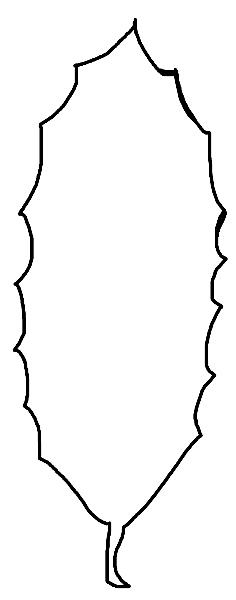
Do these images disjoin the rectangular
rectangular with the inclusion of an organic fragment outside the rectangular
form; but still within the ultimate boundaries of a rectangular frame?
The use of the drawing to break the frame and emphasizing the nature of
the organic form through he irregular shapes on the page may act as other
symbolic suggestions. The implied juxtaposition of the time differential
between the drawing and the photograph may relate respectively to the organic
elements
and synthetic structures. Whereas the photograph can be exposed instantly
recording the scene in front of the lens and then processed within a short
period of time, the drawing is built up slowly by a myriad of inter-lacing
lines laid down one at a time until the illusion of tone, depth and content
are created like a multiplying of cells. Metaphorically, the time scale
of the evolving organic nature of the planet defies age while the ability
of human kind to manipulate the environment is as that of the camera shutter
that exposed the film; about one sixtieth of a second. As a symbol, the
camera may also refer to the action of technology and machines as an accelerant
on the destruction of the organic order of the planet.
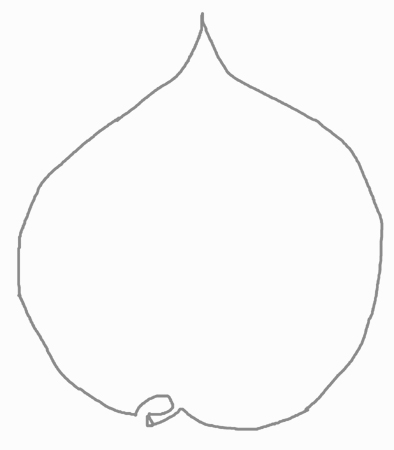
Is the mixing of media a reference
to the relevance, ideology and sophistication of each as an allegory? The
photograph has always been associated with the 'real', it is a document
of the circumstance hat existed in front of the camera at a specific place
and time. In the early years it was referred to as a 'system of nature
imitation'. The power of the photograph is that we believe it, there is
a conditioned truth implied we are willing to accept. A drawing, by contrast,
may not have existed at all. One may be imagined, the other real; but which
one? Conceivably it is the drawing that assumes a reality in terms of an
important message. These photographs are monochromatic and act as an abstraction
of tone, time and dimension on the image not present in the primary experience;
hardly real. The photograph symbolizes the 'developed environment' through
its own process while the line somehow unrefined and erratic may refer
to the 'undeveloped' by implication of he former. But it is the photograph
by its nature that is crucial to the inter-face of the two allowing us
to be convinced by the collision. Do they elicit a response about our perceptions
and attitudes we have to the environment and our rectangular reactions?
A photographic characteristic is
reproducibility. The ability to print and reprint from one original, in
a similar manner to the way we produce our synthetic products and technological
constructions. A drawing assumed as an original insinuates this exact unreproducibility,
it is a single item. Like the planet it is unique; it can not be mechanically
manufactured or repeatedly molded. Conceivably the drawing in these works
may also actuate as a device suggesting the uniqueness of the planet and
the complexities of such a replication.
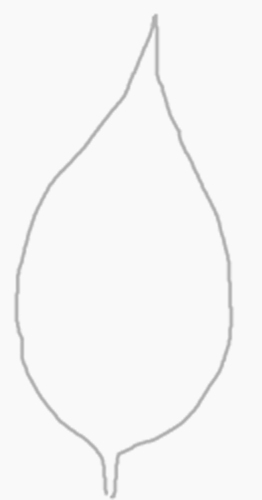
Perhaps
there are also
metaphoric symbols about
ourselves and the way we treat
each the? An image of roots wishing
to
break free from the confines of
an allotted plot of turf.
The free form of upraised branches
firmly, whimsical, organic brace.
These may relate to the way we
act upon each other in the experiment of life.
Undoubtedly there is a complexity
of meaning for each viewer to discover;
an uncoding of symbols in a future
yet to pass, a reference of the past, of the present moment and the post
modern.
But will we listen, and more important,
if we hear, will we act?
Is not this organic, synthetic
debate about being human on an
organic sphere adrift in the
vastness of space.
|
|